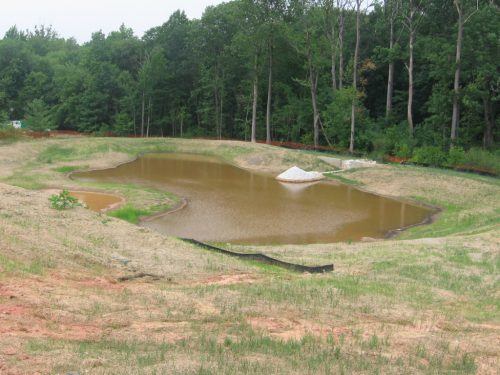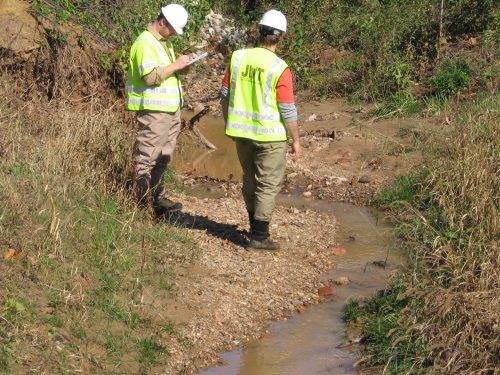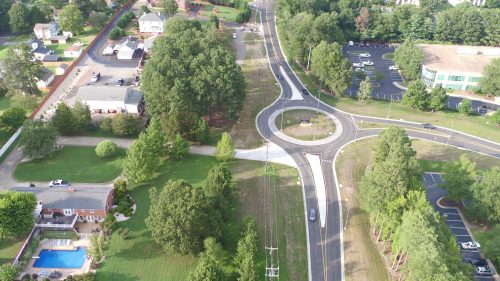Stemmers Run Stream Restoration
Stemmers Run Stream Restoration
JMT designed a plan to relocate and restore 4,000 feet of Stemmers Run Reservoir and its tributaries to support area highway reconstruction efforts. The design daylighted nearly 900 feet of multiple piped portions of stream and restored floodplain function to entrenched sections of the existing channel.
The highly-constrained stream valley presented several challenges that drove critical design components of the stream restoration. The restoration’s downstream limit was defined by new culvert design requirements to maintain existing flood control, while the upstream limit was defined by the extent of the Maryland Transportation Authority right-of-way and the preservation of an existing bridge.
The team was met with challenges due to multiple bridge piers and abutments, as well as roadway geometry requirements. Due to the reach’s bimodal sediment system, we applied a compound channel to accommodate various discharges and associated sediment flow. JMT accurately modeled the proposed bridges and culverts and restored the stream valley to account for the hydraulic impact of 29 bridge piers within the interchange. We also prepared and submitted a detailed hydrology and hydraulics report to FEMA, outlining the revised portion of Stemmers Run upon completion.
JMT assessed the stream’s geomorphologic characteristics to determine stability and sediment regime, including quantitative and qualitative assessments of channel dimension, streambed profile, channel material composition, and loading rate. JMT also completed a detailed existing and ultimate conditions hydrologic analysis for the 4.1-square-mile watershed using methods detailed in the Maryland Hydrology Panel report. These methods involved flood-frequency analyses and weighted regression results based on a downstream gage of the fixed region.
Furthermore, JMT designed in-stream structures for low-flow habitat, grade control, and near-bank stress reduction. Coupled with an enhanced substrate and reconstructed surface sequence, in-channel habitat was improved for a variety of aquatic species and benthic macroinvertebrates. Flow-separation features, critical to the foraging and spawning of forage-fish species, were also integrated into the restoration plan.








